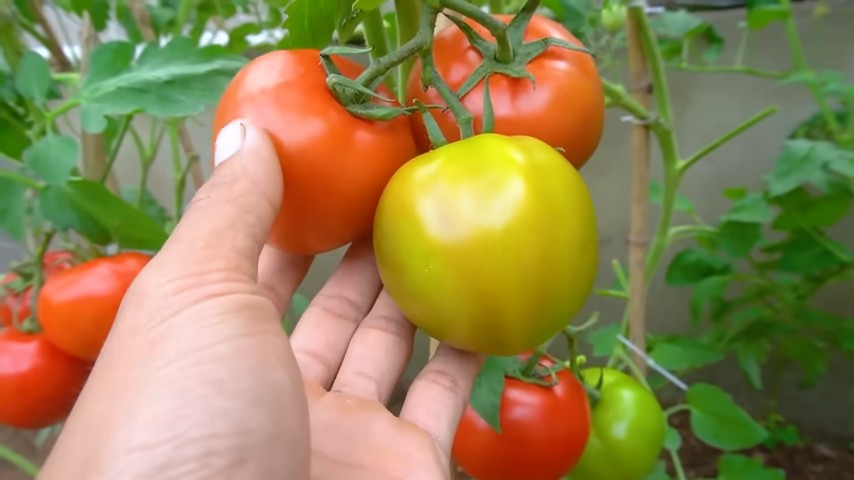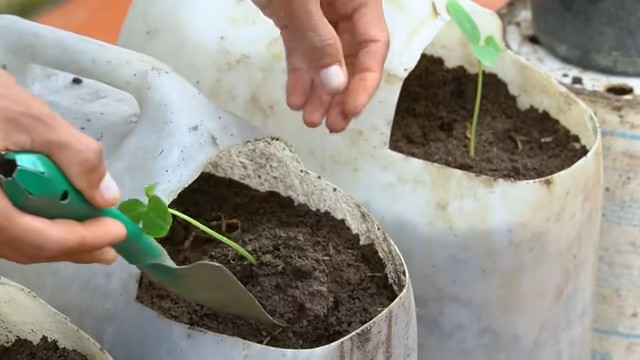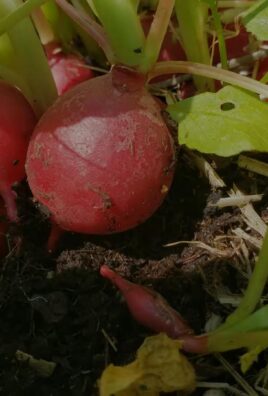Growing tomatoes indoors might seem like a far-fetched dream, especially if you don’t have a sprawling garden. But guess what? It’s totally achievable, and I’m here to show you how! Forget those bland, store-bought tomatoes – imagine biting into a juicy, sun-ripened (well, almost!) tomato that you nurtured from seed, right in your own home.
For centuries, humans have cultivated plants indoors, from ancient Egyptians growing herbs in containers to Victorian-era conservatories overflowing with exotic blooms. This tradition speaks to our innate connection with nature and our desire to bring the outdoors in. But let’s be honest, modern life often leaves us short on space and time. That’s where these DIY tricks come in!
Why should you bother learning these hacks? Because growing tomatoes indoors offers a fantastic way to enjoy fresh, flavorful produce year-round, regardless of your climate or living situation. Plus, it’s incredibly rewarding! Imagine the satisfaction of harvesting your own tomatoes, knowing exactly where they came from and what went into growing them. These DIY tips will help you overcome common challenges like lack of sunlight, pollination issues, and space constraints, ensuring you have a thriving indoor tomato garden. So, let’s dive in and unlock the secrets to a bountiful harvest!

Growing Tomatoes Indoors: A Comprehensive DIY Guide
Hey there, fellow gardening enthusiasts! Dreaming of juicy, sun-ripened tomatoes even when the weather outside is frightful? Well, you’re in luck! Growing tomatoes indoors is totally achievable, and I’m here to guide you through every step of the process. It might seem a little daunting at first, but trust me, with a little patience and the right setup, you’ll be enjoying homegrown tomatoes all year round.
Choosing the Right Tomato Variety
First things first, not all tomato varieties are created equal when it comes to indoor growing. You’ll want to opt for determinate or dwarf varieties. These types are bred to stay compact, making them perfect for containers and limited indoor space. Indeterminate varieties, on the other hand, can grow incredibly tall and require extensive staking, which isn’t ideal for indoor setups.
Here are some of my favorite determinate and dwarf tomato varieties for indoor growing:
* Tiny Tim: As the name suggests, these are super compact and produce small, cherry-sized tomatoes. They’re perfect for small spaces.
* Roma: A classic paste tomato, Romas are great for sauces and canning. They’re relatively compact and easy to manage indoors.
* Patio: This variety is specifically bred for container gardening and produces medium-sized tomatoes.
* Bush Early Girl: A determinate version of the popular Early Girl, this variety offers early yields and delicious flavor.
* Micro Tom: The smallest tomato plant available, growing only 6-8 inches tall. Perfect for a windowsill!
Setting Up Your Indoor Tomato Garden
Now that you’ve chosen your tomato variety, it’s time to create the perfect indoor environment for them to thrive. This involves considering lighting, soil, containers, and temperature.
Lighting: The Key to Success
Tomatoes need a lot of light – at least 6-8 hours of direct sunlight per day. Unfortunately, most indoor spaces don’t offer that much natural light, especially during the winter months. That’s where grow lights come in!
* Types of Grow Lights:
* LED Grow Lights: These are my personal favorite! They’re energy-efficient, produce very little heat, and provide the full spectrum of light that plants need.
* Fluorescent Grow Lights: A more affordable option, fluorescent lights are still effective for growing tomatoes indoors. T5 fluorescent lights are a good choice.
* High-Pressure Sodium (HPS) and Metal Halide (MH) Lights: These are powerful lights that are often used for larger indoor gardens. However, they produce a lot of heat and consume more energy, so they might not be the best choice for beginners.
* Setting Up Your Grow Lights:
* Position your grow lights about 6-12 inches above your tomato plants.
* Use a timer to ensure your plants receive consistent light for 14-16 hours per day.
* Adjust the height of the lights as your plants grow to maintain the optimal distance.
Soil and Containers: Providing a Healthy Foundation
The right soil and container are crucial for healthy tomato growth.
* Choosing the Right Soil:
* Use a high-quality potting mix that’s specifically formulated for vegetables. Avoid using garden soil, as it can be too heavy and compacted for containers.
* Look for a potting mix that contains peat moss, perlite, and vermiculite. These ingredients provide good drainage and aeration.
* You can also add some compost to your potting mix to provide extra nutrients.
* Selecting the Right Container:
* Choose a container that’s at least 5 gallons in size. This will give your tomato plants enough room to grow.
* Make sure the container has drainage holes to prevent waterlogging.
* Consider using fabric pots, as they allow for better air circulation and drainage.
Temperature and Humidity: Creating a Comfortable Environment
Tomatoes thrive in warm temperatures and moderate humidity.
* Temperature:
* Maintain a daytime temperature of 70-75°F (21-24°C) and a nighttime temperature of 60-65°F (15-18°C).
* Avoid exposing your plants to extreme temperature fluctuations.
* Humidity:
* Maintain a humidity level of 40-60%.
* You can increase humidity by using a humidifier or by placing a tray of water near your plants.
* Avoid overwatering, as this can lead to fungal diseases.
Planting Your Tomato Seeds or Seedlings
Now that you’ve set up your indoor garden, it’s time to plant your tomato seeds or seedlings.
Starting from Seeds:
1. Sow your seeds: Fill a seed starting tray with seed starting mix. Moisten the mix and sow seeds ¼ inch deep.
2. Provide warmth and moisture: Cover the tray with a humidity dome or plastic wrap to retain moisture. Place the tray on a heat mat to maintain a soil temperature of 70-75°F (21-24°C).
3. Provide light: Once the seeds germinate (usually within 7-14 days), remove the humidity dome and place the tray under grow lights.
4. Transplant seedlings: Once the seedlings have developed their first set of true leaves, transplant them into individual pots.
Starting with Seedlings:
1. Choose healthy seedlings: Select seedlings that are healthy, vigorous, and free from pests and diseases.
2. Prepare your container: Fill your container with potting mix.
3. Plant the seedling: Gently remove the seedling from its container and plant it in the center of your prepared container.
4. Water thoroughly: Water the seedling thoroughly after planting.
Caring for Your Indoor Tomato Plants
Once your tomato plants are established, it’s important to provide them with proper care to ensure they thrive and produce delicious tomatoes.
Watering:
1. Water deeply: Water your tomato plants deeply whenever the top inch of soil feels dry to the touch.
2. Avoid overwatering: Overwatering can lead to root rot and other problems.
3. Water at the base of the plant: Avoid wetting the foliage, as this can encourage fungal diseases.
Fertilizing:
1. Start fertilizing: Begin fertilizing your tomato plants about two weeks after transplanting.
2. Use a balanced fertilizer: Use a balanced fertilizer that’s specifically formulated for tomatoes.
3. Follow the instructions: Follow the instructions on the fertilizer label carefully.
4. Fertilize regularly: Fertilize your tomato plants every 2-3 weeks.
Pruning:
1. Prune suckers: Remove suckers (the small shoots that grow between the main stem and the branches) to encourage fruit production.
2. Remove yellowing leaves: Remove any yellowing or dead leaves to prevent the spread of disease.
3. Prune for air circulation: Prune the plant to improve air circulation and prevent fungal diseases.
Pollinating:
1. Hand-pollinate: Since there are no bees or other pollinators indoors, you’ll need to hand-pollinate your tomato plants.
2. Use a small brush: Use a small brush or cotton swab to transfer pollen from one flower to another.
3. Gently tap the flowers: You can also gently tap the flowers to release pollen.
4. Do this daily: Pollinate your tomato plants daily, especially during flowering.
Supporting:
1. Provide support: As your tomato plants grow, they’ll need support to prevent them from falling over.
2. Use stakes or cages: Use stakes or cages to support your tomato plants.
3. Tie the plants: Tie the plants to the stakes or cages with soft twine.
Dealing with Pests and Diseases
Even indoors, your tomato plants can be susceptible to pests and diseases.
Common Pests:
* Aphids: These tiny insects suck sap from plants and can cause stunted growth.
* Spider Mites: These tiny mites create webs on plants and can cause yellowing and leaf drop.
* Whiteflies: These small, white insects fly around plants and suck sap.
Common Diseases:
* Early Blight: This fungal disease causes dark spots on leaves and can eventually kill the plant.
* Late Blight: This fungal disease causes brown lesions on leaves and stems and can quickly spread to the fruit.
* Powdery Mildew: This fungal disease causes a white, powdery coating on leaves.
Prevention and Treatment:
* Inspect plants regularly: Inspect your plants regularly for signs of pests and diseases.
* Use organic pesticides: Use

Conclusion
So, there you have it! Growing tomatoes indoors might seem daunting at first, but with a little know-how and the right approach, you can enjoy the taste of homegrown tomatoes all year round. This DIY method, focusing on careful seed selection, strategic lighting, and diligent care, truly unlocks the potential for a bountiful indoor harvest.
Why is this a must-try? Because it empowers you to control the entire growing process, ensuring you get the freshest, most flavorful tomatoes possible, free from harmful pesticides and tailored to your exact preferences. Imagine biting into a sun-ripened (well, technically, *light*-ripened!) tomato in the dead of winter, a burst of summer flavor that you cultivated yourself. That’s the magic of growing tomatoes indoors.
But don’t stop there! Experiment with different varieties of tomatoes to find your favorites. Cherry tomatoes, Roma tomatoes, and even dwarf varieties are all excellent candidates for indoor cultivation. Consider using different types of grow lights to see which yields the best results for your specific setup. You can also explore different soil mixtures and fertilization techniques to optimize your plants’ growth and fruit production.
For a fun variation, try companion planting within your indoor tomato garden. Basil, for example, is known to improve the flavor of tomatoes and can also help deter pests. Marigolds are another great option, adding a splash of color and further pest control benefits.
The key to success is observation and adaptation. Pay close attention to your plants’ needs, adjust your watering and lighting accordingly, and don’t be afraid to experiment. Remember, every growing environment is unique, so what works for one person might not work for another.
We wholeheartedly encourage you to give this DIY trick a try. It’s a rewarding experience that connects you with nature and provides you with a delicious and healthy food source. And most importantly, we want to hear about your journey! Share your experiences, tips, and photos in the comments below. Let’s build a community of indoor tomato growers and learn from each other. What varieties did you choose? What challenges did you face? What successes did you celebrate? Your insights can help others achieve their indoor tomato growing dreams. So, grab your seeds, set up your lights, and get ready to enjoy the taste of homegrown goodness, no matter the season!
Frequently Asked Questions (FAQ)
1. What are the best tomato varieties to grow indoors?
The best tomato varieties for indoor growing are typically determinate or dwarf varieties, as they tend to be more compact and manageable. Cherry tomatoes, such as ‘Sweet 100’ or ‘Sungold’, are popular choices due to their small size and prolific fruit production. Roma tomatoes, known for their paste-like texture, are also a good option. For larger tomatoes, consider dwarf varieties like ‘Tiny Tim’ or ‘Patio’. Ultimately, the best variety depends on your personal preferences and the space you have available. Experimenting with different varieties is a great way to discover your favorites.
2. What kind of lighting is needed for growing tomatoes indoors?
Adequate lighting is crucial for successful indoor tomato growing. Tomatoes require at least 6-8 hours of direct light per day. While a sunny windowsill might suffice in some cases, supplemental lighting is usually necessary, especially during the winter months. LED grow lights are a popular and energy-efficient option. Fluorescent grow lights are also effective, but they may need to be placed closer to the plants. High-intensity discharge (HID) lights, such as metal halide or high-pressure sodium lamps, provide intense light but can generate a lot of heat. When choosing grow lights, consider the light spectrum, intensity, and energy consumption. Full-spectrum lights are generally recommended, as they provide the range of light wavelengths that plants need for optimal growth.
3. How often should I water my indoor tomato plants?
Watering frequency depends on several factors, including the size of the pot, the type of soil, the temperature, and the humidity. As a general rule, water your tomato plants when the top inch of soil feels dry to the touch. Avoid overwatering, as this can lead to root rot. When watering, water deeply, ensuring that the entire root ball is moistened. Allow excess water to drain out of the bottom of the pot. During hot and dry periods, you may need to water more frequently. Conversely, during cooler and more humid periods, you may need to water less frequently. Monitor your plants closely and adjust your watering schedule accordingly.
4. What type of soil is best for growing tomatoes indoors?
The ideal soil for growing tomatoes indoors is a well-draining potting mix that is rich in organic matter. Avoid using garden soil, as it can be too heavy and may contain pests or diseases. A good potting mix will provide adequate drainage, aeration, and nutrients for your plants. You can also amend your potting mix with compost, perlite, or vermiculite to improve drainage and aeration. Consider using a potting mix specifically formulated for vegetables or tomatoes.
5. How do I pollinate my indoor tomato plants?
Tomatoes are self-pollinating, but they often require assistance to pollinate effectively indoors, where there is no wind or insect activity. You can hand-pollinate your tomato plants by gently shaking the stems or tapping the flowers. You can also use a small paintbrush or cotton swab to transfer pollen from one flower to another. Another option is to use a fan to create a gentle breeze that will help to distribute the pollen. Pollinating during the warmest part of the day, when the pollen is driest, is generally most effective.
6. What are some common pests and diseases that affect indoor tomato plants?
Common pests that can affect indoor tomato plants include aphids, whiteflies, spider mites, and fungus gnats. These pests can be controlled with insecticidal soap, neem oil, or other organic pest control methods. Common diseases that can affect indoor tomato plants include early blight, late blight, and powdery mildew. These diseases can be prevented by providing good air circulation, avoiding overwatering, and using disease-resistant varieties. If your plants do develop a disease, you can treat them with a fungicide.
7. How do I fertilize my indoor tomato plants?
Tomatoes are heavy feeders and require regular fertilization to produce a bountiful harvest. Start fertilizing your plants a few weeks after transplanting them into their final pots. Use a fertilizer that is specifically formulated for tomatoes or vegetables. Follow the instructions on the fertilizer label for application rates and frequency. You can also use organic fertilizers, such as compost tea or fish emulsion. Avoid over-fertilizing, as this can lead to nutrient imbalances and other problems.
8. How long does it take to grow tomatoes indoors?
The time it takes to grow tomatoes indoors depends on the variety, the growing conditions, and your level of care. Generally, it takes about 60-85 days from transplanting to harvest. Cherry tomatoes tend to ripen faster than larger varieties. Providing optimal lighting, watering, and fertilization will help to speed up the growing process. Be patient and persistent, and you will be rewarded with a delicious and homegrown harvest.




Leave a Comment